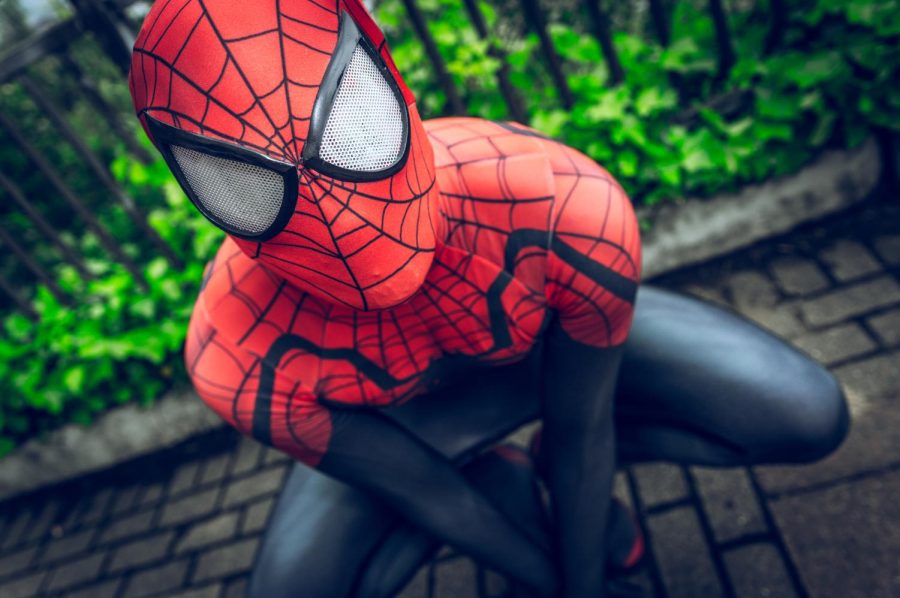Review | “Spider-Man: Across the Spider-Verse” raises the bar for animation
New release shows audiences it was worth the wait.
June 13, 2023
I don’t remember much about 2018, except for one film that completely consumed me. “Spider-Man: Into the Spider-Verse”(ITSV) was easily a 10/10 five years ago and is still a 10/10 today. Spider-Man fiends such as myself eagerly awaited the premiere of the sequel after a couple of rescheduled release dates left us crawling in our skin (Spiders-Man – A Spider-Man variant made of spiders shaped like a man – haunts me sometimes).
“Spider-Man: Across The Spider-Verse” (ATSV) surpassed any expectations I had. With a runtime of two hours and nineteen minutes, ASTV is now the longest American-made animated film in history. The mixture of art styles and animation techniques is even more unique and breathtaking than the first installment in the trilogy.
Spider-Man has always been my ‘thing.’ I can always manage to bring up Spider-Man in any conversation (If I had a nickel for how many times I’m writing ‘Spider-Man’ in this article…). Given my history of collecting Spidey comics (Specifically 2099), every cameo of different spider-variants made my heart flutter. I mean, I’ve seen it in the theater thrice since its premiere on June 2. It showcases that ‘anyone can be Spider-Man.’ I need to experience it a fourth time to catch more details I missed.
ATSV opened with a drumming montage of Spider-Gwen catching the audience up on what has happened since ITSV. I liked that the band (that she immediately quit after the montage ended) was called “The Mary Janes.” This was my first clue-in that this film might be blurring some ‘PG’ boundaries– and I liked that.
I went with my 13-year-old sibling for my first time viewing ATSV and all I could hear were “oohs” and “aahs” next to me in regard to Spider-Gwen’s world design. It looked like a three-dimensional watercolor that shifted in color with her mood: a personified mood ring. It showed how Gwen kept all her feelings inside, but the audience could see how she really felt through the environment surrounding her.
Spider-Gwen’s arc started with her rocky relationship with her Captain of Police father. Events escalated when a villain from an alternate world made its way into Spider-Gwen’s, forcing her to reveal her identity to her father. Evading her father and prison, Spider-Gwen chose to join a force of dimension-traveling Spider-Men apt to keep the universe in balance from paradoxes.
The narrative then shifts to Miles Morales’ world where the audience learns more about his relationship with his family. After running into a so-called “villain of the week,” Spot approached Miles, but Miles had Miles Morales duties to attend to, not Spider-Man duties. After getting grounded, Miles was approached by dimension-traveling Spider-Gwen for a day out in Brooklyn.
RELATED: Ten long-awaited new movies to watch over summer break
More events escalated that led the duo to Spidey Headquarters (that is probably not the official name). Here is where the bulk of Spider-Man variants came in. My highlights are Miguel O’Hara, Hobie Brown, Pavitr Prabhakar, Sun-Spider, Spectacular Spider-Man, Insomniac-Spider, Peter Parked-Car, and about 200 more if I could analyze it frame-by-frame.
Let’s talk about frame-by-frame. In the first film, Miles Morales was animated at 12 frames per second while his environment was animated at 24 frames per second. When he got a better hang of his spider powers, his animation began to catch up with the world around him.
There was a similar method used with Spider-Punk’s (which he does not like being called) animation. Hobie Brown was animated at a lower animation rate than the environment around him, but at times it would speed up along with a change in his art style (he does like inconsistency).
I loved Pavitr Prabhakar’s Mumbai-Manhattan fusion city. The art style was colorful and inviting. This spidey was so sweet it melted my heart. My only complaint is that the music was too loud in the mix and I missed some of his witty dialogue– same with Hobie Brown’s British punk accent.
The most impressive inclusion was Lego Spider-Man. The stop-motion scene was created by a 14-year-old YouTuber, Preston Mutanga, caught the attention of the ATSV creators when he posted his recreation of the ATSV trailer in Legos. Miguel O’Hara telling Lego-spidey he’s “One of our best” was priceless.
The end of this movie was not a proper ending. ‘To Be Continued’ appeared on-screen and I gasped. Then I looked at my watch and was so confused as to how two hours and nineteen minutes passed me by like nothing. The next installment, “Spider-Man: Beyond The Spider-Verse” is projected to premiere on March 29, 2023. However, due to the current writer’s strike, I expect that date to also be rescheduled.
As a children’s film, I appreciated that there wasn’t an unnecessary teenage love triangle at the forefront, and rather focused on the emotional, familial arc of self-acceptance and identity in the characters. The story wasn’t about their differences, but about how the universe was in detriment. The inclusion of every character actually advanced the plot. A wonderful change of pace in storytelling that carried from the first film.
The inclusion of so many art styles, body types, ethnicities, and genders (Spider-Gwen’s father had a transgender pride flag on his coat) in this film is impeccable. I smiled so hard when hijabi-spidey walked on-screen. The music score could get its own article alone. This is easily another 10/10. It would be an 11/10, but, as a stand-alone film, it’s not as strong. It is, however, a very breathtaking sequel that left me in tears several times. I’m patiently sitting in my spidey suit until the third one is released.



